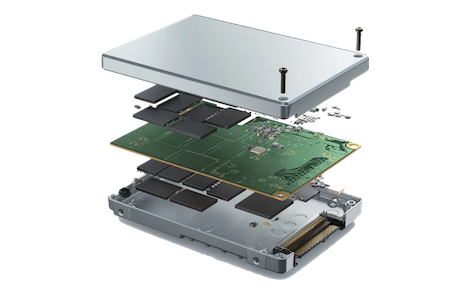SSD Reliability
Updated: Aug 14, 2023

There are a lot of advantages to Solid State Drives (SSDs)? They are faster - sometimes far faster - than conventional Hard Disk Drives (HDDs). They have no moving parts, are more compact, they use less power, and - theoretically - the can withstand more shocks and vibration than the conventional magnetic platter on a Hard Drive. And, even better, their costs are coming down and there is more and more choice and availability. So, what's not to like...?
Sadly, however its not a complete slam-dunk in favour of SSD versus HDD. Lets look at the following issues:
P/E cycles
Programme/Erase Cycles are an important measurement of SSD reliability. To summarise this briefly, the SSD chips will start to have trouble keeping their electrons in their stored locations as usage increases. What this means is that data cannot be written/deleted/rewritten etc to an SSD an infinite number of times. As a guide, the better SSD's are rated to do approx 100,000 rewrite cycles - but not all do.
TBW limit
Tereabytes written is the total amount of data that can be written before the SSD is likely to fail. This varies across SSD's but typically, the ones we see are currently between 250 tb to 1000 tb. So they can be expected to start failing once their cumulative data use gets beyond these levels.
SSD Mean Time Before failure (MTBF)
This is a general rating that lots of products have. It's a measure of the reliability of a product when used within the manufacturers stated expected usage. The key thing to remember here is, this is an average. It does not mean your SSD will definitely achieve this. This measure is also an extrapolation of SSD's operated by the manufacturer within their test site. As a guide ,Seagate, one of the larger HDD manufacturers rates its Hard Drives ranging between 300,000 to 1.2m hours between failure. Whereas we have seen quoted SSD MTBF rates of around 1.5m hours. So SSD's should be more reliable - but they can still fail.
How SSD's are used
Because they are so fast. SSDs are often used in the most data transfer intensive operations within a computer system. They thus tend - on average - to get much more use than on average than a Hard Drive.
We use Backblaze for some of our offsite secure data storage needs. They regularly do surveys of reliability from their storage drives. Their experience of failure rates are as follows. 1.6 Hard drives in a 1000 will fail - each quarter. Whereas its 0.96 for SSDs. So there is not really a massive difference once you start using them. And, if you extrapolate these figures to e.g. 5 years then you get a failures rates of 3.2 per hundred for Hard drives and 1.9 per hundred for SSD's. We would suggest that the odds of failure between the two do favour SSD's but its not by that much. And there is still a small but appreciable risk of failure for either over a 5 year period.
SSD Data Recovery
So given there is a reasonable chance of failure what are the odds and costs of getting your data back. This very much depends on what has actually gone wrong. However it is true to say that the chances of data recovery from an SSD are - on average - typically lower than for a Hard Drive. In very rough terms the odds of a successful recovery drop by at least half. This is definitely something you should factor in to your thinking in keeping data on SSD's. If you do have a problem it is likely to be more difficult to recover your data and it may be impossible.
Summary
So the message here is that; all that glitters is not necessarily gold. If you are storing data on an SSD you should always ensure that you have a backup on a separate device. With their lower costs of storage and greater ease of recovery should disaster strike a Hard drive is still a very good option for backing up your data.
Auckland
Level 1, 399 Khyber Pass Rd, Newmarket, Auckland 1023
Wellington
Level 6, Aon Centre, 1 Willis Street, CBD, Wellington 6011
Christchurch
Ground Level, 14 Hazeldean Rd, Addington, Christchurch, 8024
© Datalab Ltd 2024 • Privacy Policy • Terms & Conditions • Website Terms of Use

